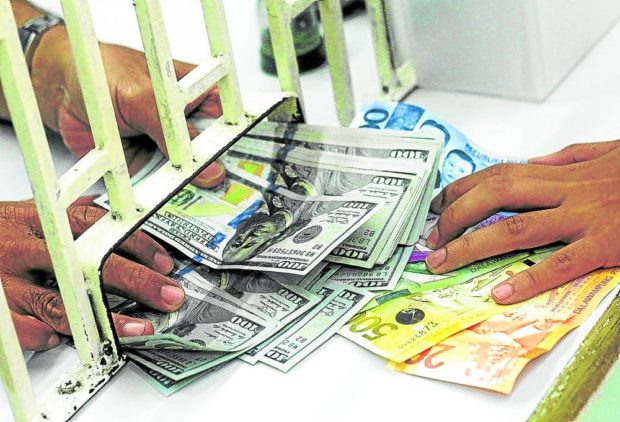MANILA, Philippines -As the seasonal increase in Philippines-bound money transfers sets in, personal remittances from overseas Filipino workers (OFWs) grew by 3.1 percent to reach $3.33 billion last October from $3.23 billion in the same month last year.
This was the fastest increase in six months or since 3.8 percent in April when inflows rang up $2.8 billion.
It is also in line with the full-year growth of 3 percent that the Bangko Sentral ng Pilipinas expects for 2023.
The results for October brought cumulative inflows so far this year to $30.57 billion, which is 2.9 percent higher than the $29.72 billion recorded in January-October last year.
Of total inflow in October alone, cash remittances or those amounts sent through banks totaled at $3 billion, rising by 3 percent from $2.91 billion in the same month of 2022.
READ: OFW deployment still below prepandemic levels
Ten-month cash remittances grew by 2.8 percent to $27.49 billion from $26.74 billion.
Contributing the most to the increase in inflows were greater transfers from the United States, Saudi Arabia, and Singapore.
Michael Ricafort, chief economist at Rizal Commercial Banking Corp., said the growth in cash remittances in October was slower than the 3.5-percent increase recorded a year ago.
“(B)ut the continued growth nevertheless is still a good signal [and a] bright spot for the overall economy as an important growth driver,” Ricafort said.
He added that October bank transfers from OFWs was the highest in 10 months or since the $3.16 billion received in December 2022 and the second-highest monthly amount on record.
READ: Slow, steady remittance growth seen until 2025
Ricafort added that the continued and consistent growth in OFW remittances could be attributed to higher local prices of goods and services, which required the sending of more remittances back to the country.
“For the coming months, single-digit or modest growth in OFW remittances could still continue as OFW dependents still need to cope with relatively higher prices and as household spending for both essentials and nonessentials continue to normalize” in a post-pandemic situation, he said. —Ronnel W. Domingo


